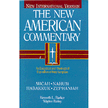Bible Commentaries on the Minor Prophets
(Hosea – Malachi)
The writings of these prophets are short (the Hebrew Bible combines them into one book). Yet these twelve books are packed with lessons that had a profound impact on the original recipients and on each succeeding generation down to our own day. Their dominant theme seems to be the justice of God, especially toward the oppressed of society. Here you will also find prophecies about the Messiah and His kingdom, the Church, as well as significant prophecies about the conversion of the nations.
In your attempts to “go deeper” in this part of the Word of God, you will gain a great deal from making careful selections of study aids. As with commentaries on other parts of the Bible, however, you need to find a good match between your own needs and abilities and what your commentaries provide, because they are all on different levels. Here and there I will add notes as I am able to help you along in your decision-making process. These notes are all in this navy-blue color. —Steve
- Minor Prophets (Hosea – Malachi) or combinations of books
- Hosea
- Joel
- Amos
- Obadiah
- Jonah
- Micah
- Nahum
- Habakkuk
- Zephaniah
- Haggai
- Zechariah
- Malachi
All 12 in one volume and other combinations (Hosea – Malachi)
New International Biblical Commentary (NIBC), Minor Prophets 1 by Elizabeth Achtemeier / Hendrickson Publishers
 The NIBC offers the best of contemporary scholarship in a format that both general readers and serious students can use with profit. Based on the NIV translation, the NIBC presents careful, section-by-section exposition with key terms and phrases highlighted and all Hebrew transliterated. A separate section of notes at the close of each chapter provides additional textual and technical comments. Each commentary also includes a selected bibliography. Hosea, Joel, Amos, Obadiah, Jonah, Micah are included in this volume.
The NIBC offers the best of contemporary scholarship in a format that both general readers and serious students can use with profit. Based on the NIV translation, the NIBC presents careful, section-by-section exposition with key terms and phrases highlighted and all Hebrew transliterated. A separate section of notes at the close of each chapter provides additional textual and technical comments. Each commentary also includes a selected bibliography. Hosea, Joel, Amos, Obadiah, Jonah, Micah are included in this volume.![]()
Ancient Christian Commentary Old Testament XIV The Twelve Prophets by Alberto Ferreiro, ed. / Inter-varsity Press
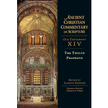 The brief writings of the minor prophets were rich in utterances concerning the Messiah. Following the New Testament authors, the church fathers uncovered numerous parallels between the Gospels and the prophetic writings. Irenaeus, Basil the Great, Origen, and others mine the wisdom and insights of these ancient texts.
The brief writings of the minor prophets were rich in utterances concerning the Messiah. Following the New Testament authors, the church fathers uncovered numerous parallels between the Gospels and the prophetic writings. Irenaeus, Basil the Great, Origen, and others mine the wisdom and insights of these ancient texts.![]()
The Expositor’s Bible Commentary, Volume 7: Daniel and the Minor Prophets by Frank E. Gaebelein / Zondervan Corp.
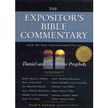 An evangelical scholarly treatment of the scriptures, this volume includes Daniel and all of the Minor Prophets. The commentaries include introductory articles discussing authorship, dating, linguistics and history of the books, along with an analysis of each book, including its theological and historical issues.
An evangelical scholarly treatment of the scriptures, this volume includes Daniel and all of the Minor Prophets. The commentaries include introductory articles discussing authorship, dating, linguistics and history of the books, along with an analysis of each book, including its theological and historical issues.
Commentators in this volume include:
- Gleason Archer Jr. (Daniel)
- Leon Wood (Hosea)
- Richard Patterson (Joel)
- Thomas McComiskey (Amos)
- Carl Armerding (Obadiah, Nahum, Habakkuk)
- H.L. Ellison (Jonah)
- Larry Walker (Zephaniah)
- Robert Alden (Haggai–Malachi)
- Kenneth Barker (Zechariah)
The Preacher’s Commentary
Vol. 22:
Hosea/Joel/Amos/Obadiah/Jonah by Lloyd J. Ogilvie / Thomas Nelson / W 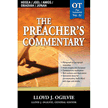 Preacher Lloyd Ogilvie deals with some of the most challenging Scriptures in the Old Testament in this volume, as he illuminates the Minor Prophets’ call for us to return to our holy God with righteous living and social justice. The Preacher’s Commentary Series combines rich resources of historical setting and textual interpretation with spiritual insights and contemporary illustrations specifically designed for communicators. [TOP]
Preacher Lloyd Ogilvie deals with some of the most challenging Scriptures in the Old Testament in this volume, as he illuminates the Minor Prophets’ call for us to return to our holy God with righteous living and social justice. The Preacher’s Commentary Series combines rich resources of historical setting and textual interpretation with spiritual insights and contemporary illustrations specifically designed for communicators. [TOP]![]()
Hosea-Jonah, Word Biblical Commentary by Douglas Stuart / Thomas Nelson / W
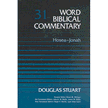 Tremper Longman has this to say about it: “This is one of the best recent commentaries on the minor prophets. It is a must-buy for everyone who is preaching on these books. It is intelligently conservative and emphasizes theology without ignoring the other aspects of the text. Shows how the prophets operated in a tradition going back to the covenant curses of the Pentateuch.”
Tremper Longman has this to say about it: “This is one of the best recent commentaries on the minor prophets. It is a must-buy for everyone who is preaching on these books. It is intelligently conservative and emphasizes theology without ignoring the other aspects of the text. Shows how the prophets operated in a tradition going back to the covenant curses of the Pentateuch.”![]()
Holman Old Testament Commentary: Volume 19 Hosea, Joel, Amos, Obadiah, Jonah, Micah by Trent Butler / Broadman / Holman
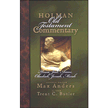 Dr. Butler give the unique background to each prophet, his message, and the forms his messages take. He articulates the enduring principles expressed in these inspired writings that are as relevant to a postmodern culture as they were when they were first spoken. He provides teachers and preachers with compelling quotes and illustrations that will enhance communicating this portion of God’s Word in the 21st Century.
Dr. Butler give the unique background to each prophet, his message, and the forms his messages take. He articulates the enduring principles expressed in these inspired writings that are as relevant to a postmodern culture as they were when they were first spoken. He provides teachers and preachers with compelling quotes and illustrations that will enhance communicating this portion of God’s Word in the 21st Century.![]()
Hosea, Amos: Believers Church Bible Commentary
By Allen Guenther / Herald Press
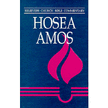 The author uncovers unique features of the prophecies of Hosea and Amos and discerns a structural unity within each book. For both prophets, the Lord’s
The author uncovers unique features of the prophecies of Hosea and Amos and discerns a structural unity within each book. For both prophets, the Lord’s
judgment is to lead to repentance and restoration. Guenther explores theological and practical implications of their message to the church in its cultural settings.![]()
NIV Application Commentary Hosea, Amos, and Micah by Gary Smith / Zondervan Corp.
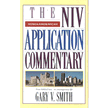 What would Hosea, Amos, Micah say if they came to today’s church or saw what was happening in modern culture? In this new volume in the NIV Application Commentary series, Gary Smith examines original meanings and historical contexts to reveal the contemporary significance of these three prophetic books—would Hosea still find prostitution; Amos, the poor being oppressed; Micah, corruption in high places? Society’s need for God’s love still remains. 656 pages, hardcover, Zondervan.
What would Hosea, Amos, Micah say if they came to today’s church or saw what was happening in modern culture? In this new volume in the NIV Application Commentary series, Gary Smith examines original meanings and historical contexts to reveal the contemporary significance of these three prophetic books—would Hosea still find prostitution; Amos, the poor being oppressed; Micah, corruption in high places? Society’s need for God’s love still remains. 656 pages, hardcover, Zondervan.![]()
Hosea and Joel, New American Commentary by Duane Garrett / Broadman / Holman
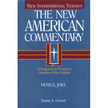 In Hosea and Joel the implement employed to capture the attention and hearts of God’s people is the symbol. In Joel it is the locust, a symbol of impending destruction. In Hosea the prophet himself – and his scorned but constant love – dramatically portrays God’s message of grace and his call to repent.
In Hosea and Joel the implement employed to capture the attention and hearts of God’s people is the symbol. In Joel it is the locust, a symbol of impending destruction. In Hosea the prophet himself – and his scorned but constant love – dramatically portrays God’s message of grace and his call to repent.![]()
Hosea, Joel, Amos Westminster Bible Commentary by Bruce Birch / Westminster / John Knox
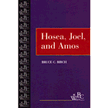 [TOP]
[TOP]![]()
Nahum-Malachi, Holman Old Testament Commentary Volume 20 by Stephen R. Miller / Broadman / Holman
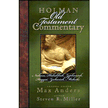 This volume contains commentary on the last six of the minor prophets. Despite the fact that each of the 12 books of the Minor Prophets were written at different times and places, sometime in the development of the Hebrew canon, these twelve books were bound together in one scroll. Over time, they came to be called “The Twelve.” Some Old Testament scholars have argued that there is an overall structure to Minor Prophets. Paul House argues that the first six books, Hosea to Micah have sin as their theme. Nahum, Habakkuk, and Zephaniah emphasize punishment while Haggai, Zechariah, and Malachi focus on restoration.
This volume contains commentary on the last six of the minor prophets. Despite the fact that each of the 12 books of the Minor Prophets were written at different times and places, sometime in the development of the Hebrew canon, these twelve books were bound together in one scroll. Over time, they came to be called “The Twelve.” Some Old Testament scholars have argued that there is an overall structure to Minor Prophets. Paul House argues that the first six books, Hosea to Micah have sin as their theme. Nahum, Habakkuk, and Zephaniah emphasize punishment while Haggai, Zechariah, and Malachi focus on restoration.
In this commentary, Steven Miller makes clear the message and enduring relevance of each of these six
prophets. In The New American Commentary and in Shepherd’s Notes , Dr. Miller has served as a translator of the Holman Christian Standard Bible, and has written extensively for Southern Baptist Bible study curriculum. Steve and his wife Paula have two daughters, Miriam and Rachel.
![]()
Abingdon Old Testament Commentary: Nahum, Habakkuk, Zephaniah, Haggai, Zechariah, Malachi by Julia O’Brien / Abingdon Press
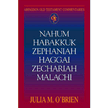
![]()
Nahum, Habakkuk, & Zephaniah, New International Commentary on the Old Testament by O. Palmer Robertson / Eerdmans Publishing Co.
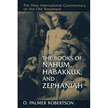 History and prophecy merge in the books of Nahum, Habakkuk, and Zephaniah. The crises of Judah and its neighbors, bewailed by the three prophets, in turn anticipated world-shaking events that were yet to come. Robertson combines biblical theology with contemporary awareness, confronting readers with the ancient call to repentance and faith. As in every NIC volume, the introduction discusses questions of date, authorship, and structure. The commentary proper, based on Robertson’s own translation, is predominantly expository, leaving details of text and translation for the footnotes. Hardcover from Eerdmans, 384 pages.
History and prophecy merge in the books of Nahum, Habakkuk, and Zephaniah. The crises of Judah and its neighbors, bewailed by the three prophets, in turn anticipated world-shaking events that were yet to come. Robertson combines biblical theology with contemporary awareness, confronting readers with the ancient call to repentance and faith. As in every NIC volume, the introduction discusses questions of date, authorship, and structure. The commentary proper, based on Robertson’s own translation, is predominantly expository, leaving details of text and translation for the footnotes. Hardcover from Eerdmans, 384 pages.![]()
The Preacher’s Commentary
Vol. 22:
Hosea/Joel/Amos/Obadiah/Jonah by Lloyd J. Ogilvie / Thomas Nelson / W
 In this volume on the Minor Prophets, expositor and preacher Lloyd Ogilvie deals with some of the most challenging Scriptures in the Old Testament in this volume, as he illuminates the Minor Prophets call to us to return to our holy God with righteous living and social justice.
In this volume on the Minor Prophets, expositor and preacher Lloyd Ogilvie deals with some of the most challenging Scriptures in the Old Testament in this volume, as he illuminates the Minor Prophets call to us to return to our holy God with righteous living and social justice.
The Preachers Commentary Series combines rich resources of historical setting and textual interpretation with spiritual insights and contemporary illustrations specifically designed for communicators.![]()
Hosea-Jonah, Word Biblical Commentary by Douglas Stuart / Thomas Nelson / W
 Tremper Longman has this to say about it: “This is one of the best recent commentaries on the minor prophets. It is a must-buy for everyone who is preaching on these books. It is intelligently conservative and emphasizes theology without ignoring the other aspects of the text. Shows how the prophets operated in a tradition going back to the covenant curses of the Pentateuch.”
Tremper Longman has this to say about it: “This is one of the best recent commentaries on the minor prophets. It is a must-buy for everyone who is preaching on these books. It is intelligently conservative and emphasizes theology without ignoring the other aspects of the text. Shows how the prophets operated in a tradition going back to the covenant curses of the Pentateuch.”![]()
Holman Old Testament Commentary: Volume 19 Hosea, Joel, Amos, Obadiah, Jonah, Micah by Trent Butler / Broadman / Holman
 This is one of two volumes in the Holman Old Testament Commentary on the Minor Prophets, covering Hosea, Joel, Amos, Obadiah, Jonah, and Micah. In this volume, Dr. Butler give the unique background to each prophet, his message, and the forms his messages take. He articulates the enduring principles expressed in these inspired writings that are as relevant to a postmodern culture as they were when they were first spoken. He provides teachers and preachers with compelling quotes and illustrations that will enhance communicating this portion of God’s Word in the 21st Century. [TOP]
This is one of two volumes in the Holman Old Testament Commentary on the Minor Prophets, covering Hosea, Joel, Amos, Obadiah, Jonah, and Micah. In this volume, Dr. Butler give the unique background to each prophet, his message, and the forms his messages take. He articulates the enduring principles expressed in these inspired writings that are as relevant to a postmodern culture as they were when they were first spoken. He provides teachers and preachers with compelling quotes and illustrations that will enhance communicating this portion of God’s Word in the 21st Century. [TOP]![]()
Hosea, Amos: Believers Church Bible Commentary by Allen Guenther / Herald Press
 The author uncovers unique features of the prophecies of Hosea and Amos and discerns a structural unity within each book. For both prophets, the Lord’s judgment is to lead to repentance and restoration. Guenther explores theological and practical implications of their message to the church in its cultural settings.
The author uncovers unique features of the prophecies of Hosea and Amos and discerns a structural unity within each book. For both prophets, the Lord’s judgment is to lead to repentance and restoration. Guenther explores theological and practical implications of their message to the church in its cultural settings.![]()
NIV Application Commentary Hosea, Amos, and Micah by Gary Smith / Zondervan Corp.
 What would Hosea, Amos, Micah say if they came to today’s church or saw what was happening in modern culture? In this new volume in the NIV Application Commentary series, Gary Smith examines original meanings and historical contexts to reveal the contemporary significance of these three prophetic books—would Hosea still find prostitution; Amos, the poor being oppressed; Micah, corruption in high places? Society’s need for God’s love still remains. 656 pages, hardcover, Zondervan.
What would Hosea, Amos, Micah say if they came to today’s church or saw what was happening in modern culture? In this new volume in the NIV Application Commentary series, Gary Smith examines original meanings and historical contexts to reveal the contemporary significance of these three prophetic books—would Hosea still find prostitution; Amos, the poor being oppressed; Micah, corruption in high places? Society’s need for God’s love still remains. 656 pages, hardcover, Zondervan.![]()
Hosea and Joel, New American Commentary by Duane Garrett / Broadman / Holman
 In Hosea and Joel the implement employed to capture the attention and hearts of God’s people is the symbol. In Joel it is the locust, a symbol of impending destruction. In Hosea the prophet himself – and his scorned but constant love – dramatically portrays God’s message of grace and his call to repent.
In Hosea and Joel the implement employed to capture the attention and hearts of God’s people is the symbol. In Joel it is the locust, a symbol of impending destruction. In Hosea the prophet himself – and his scorned but constant love – dramatically portrays God’s message of grace and his call to repent.![]()
Hosea, Joel, Amos Westminster Bible Commentary by Bruce Birch / Westminster / John Knox

![]()
Abingdon Old Testament Commentary: Hosea – Micah by Daniel Simundson / Abingdon Press
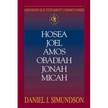 [TOP]
[TOP]![]()
Joel and Obadiah: A Commentary by John Barton / Westminster / John Knox
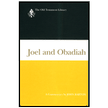 Though two of the shortest books in the Bible, Joel and Obadiah are treasures rich in themes, imagery, and poetry. Both Joel and Obadiah emphasize judgment and the redemption of societal misconduct. In this commentary, Barton discusses questions of historical background and literary architecture and unpacks the theological significance of the text–both historical and contemporary–of these prophets.
Though two of the shortest books in the Bible, Joel and Obadiah are treasures rich in themes, imagery, and poetry. Both Joel and Obadiah emphasize judgment and the redemption of societal misconduct. In this commentary, Barton discusses questions of historical background and literary architecture and unpacks the theological significance of the text–both historical and contemporary–of these prophets.![]()
Amos, Obadiah, and Jonah, New American Commentary by Billy Smith / Broadman / Holman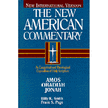 The New American Commentary assumes the inerrancy of Scripture, focuses on the intrinsic theological and exegetical concerns of each biblical book, and engages the range of issues raised in contemporary biblical scholarship. Verse-by-verse, detailed exposition. Person, subject, and scripture indexes. Well-footnoted to scholarship, but lacking bibliography. Actual text is printed section-by-section for the reader. Amos portrays the Lord as a lion roaring against pride, greed, social injustice, violence, and empty religion. Obadiah echoes and amplifies Amos’s prophecies of judgment. Jonah is a proclamation of our God of sovereign grace.
The New American Commentary assumes the inerrancy of Scripture, focuses on the intrinsic theological and exegetical concerns of each biblical book, and engages the range of issues raised in contemporary biblical scholarship. Verse-by-verse, detailed exposition. Person, subject, and scripture indexes. Well-footnoted to scholarship, but lacking bibliography. Actual text is printed section-by-section for the reader. Amos portrays the Lord as a lion roaring against pride, greed, social injustice, violence, and empty religion. Obadiah echoes and amplifies Amos’s prophecies of judgment. Jonah is a proclamation of our God of sovereign grace.![]()
Jonah, Nahum, Habakkuk, Zephaniah – NIV Application Commentary by James Bruckner / Zondervan Corp.
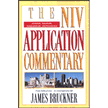 The unique strength of the NIV Application Commentary series is that it explains not only what the Bible meant, but also how it can speak powerfully today. The prophets Jonah, Nahum, Habakkuk, and Zephaniah all spoke to a nation that had to deal with violent enemies. While Jonah took his message to the city of Nineveh, the others faced the crisis of a new power: Babylon. Eventually, the Babylonian Empire destroyed Nineveh as prophesied by Nahum, and later destroyed Jerusalem as prophesied by Habakkuk and Zephaniah. Although these four prophets come from the distant past, they still call God’s people to consider what it means to be faithful when violent enemies press upon them. They offer God’s hope and resources in the midst of personal and societal crises.
The unique strength of the NIV Application Commentary series is that it explains not only what the Bible meant, but also how it can speak powerfully today. The prophets Jonah, Nahum, Habakkuk, and Zephaniah all spoke to a nation that had to deal with violent enemies. While Jonah took his message to the city of Nineveh, the others faced the crisis of a new power: Babylon. Eventually, the Babylonian Empire destroyed Nineveh as prophesied by Nahum, and later destroyed Jerusalem as prophesied by Habakkuk and Zephaniah. Although these four prophets come from the distant past, they still call God’s people to consider what it means to be faithful when violent enemies press upon them. They offer God’s hope and resources in the midst of personal and societal crises.
Jonah, Nahum, Habakkuk, and Zephaniah, part of the NIV Application Commentary series, helps twenty-first century readers understand the original context and meaning of these prophetic books, but it also shows how these writings can have the same powerful impact and ministry in today’s world as when they were first written.![]()
The Preacher’s Commentary Vol. 23: Micah through Malachi by Walter C. Kaiser / Thomas Nelson / W
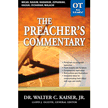 Renowned Old Testament
Renowned Old Testament
scholar Dr. Walter Kaiser offers this volume on the seven prophets explaining how the seven books are modern declarations of how the prophets continue to speak to us today in our involvement with modernity. The seven prophets illuminate great hope and insights for ministry and service.
The Preachers Commentary Series combines rich resources of historical setting and textual interpretation with spiritual insights and contemporary illustrations specifically designed for communicators. Based on the New King James Bible.![]()
Micah, Nahum, Habakkuk, and Zephaniah,
New American Commentary by Kenneth L. Barker & Waylon Bailey / Broadman / Holman
The New American Commentary is for those who have been seeking a commentary that honors the Scriptures, evangelical scholarship, and lends to the practical work of preaching and teaching. This series serves as a minister’s friend and a student’s guide. Notable features include: the NIV text printed in the body of the commentary; sound scholarly methodology that reflects capable research in the original languages; interpretation that emphasizes the theological unity of each book and of Scripture as a whole; and engages the range of issues raised in contemporary biblical scholarship. [TOP]![]()
 Nahum-Malachi, Holman Old Testament Commentary Volume 20 by Stephen R. Miller / Broadman / Holman
Nahum-Malachi, Holman Old Testament Commentary Volume 20 by Stephen R. Miller / Broadman / Holman
The Holman Old Testament Commentary has two volumes on the minor prophets that came to be so called because of their size but not their importance. This volume contains commentary on the last six of the minor prophets. Despite the fact that each of the 12 books of the Minor Prophets were written at different times and places, sometime in the development of the Hebrew canon, these twelve books were bound together in one scroll. Some Old Testament scholars have argued that there is an overall structure to Minor Prophets. Paul House argues that the first six books, Hosea to Micah have sin as their theme. Nahum, Habakkuk, and Zephaniah emphasize punishment while Haggai, Zechariah, and Malachi focus on restoration.
In this commentary, Steven Miller makes clear the message and enduring relevance of each of these six prophets. In The New American Commentary and in Shepherd’s Notes , Dr. Miller has served as a translator of the Holman Christian Standard Bible, and has written extensively for Southern Baptist Bible study curriculum. Steve and his wife Paula have two daughters, Miriam and Rachel.
 Abingdon Old Testament Commentary: Nahum, Habakkuk, Zephaniah, Haggai, Zechariah, Malachi by Julia O’Brien / Abingdon Press
Abingdon Old Testament Commentary: Nahum, Habakkuk, Zephaniah, Haggai, Zechariah, Malachi by Julia O’Brien / Abingdon Press
Nahum, Habakkuk, & Zephaniah, New International Commentary
on the Old Testament by O. Palmer Robertson / Eerdmans Publishing Co.
History and prophecy merge in the books of Nahum, Habakkuk, and Zephaniah. The crises of Judah and its neighbors, bewailed by the three prophets, in turn anticipated world-shaking events that were yet to come. Robertson combines biblical theology with contemporary awareness, confronting readers with the ancient call to repentance and faith. As in every NIC volume, the introduction discusses questions of date, authorship, and structure. The commentary proper, based on Robertson’s own translation, is predominantly expository, leaving details of text and translation for the footnotes. Hardcover from Eerdmans, 384 pages.![]()
Haggai and Malachi, New International Commentary on the Old Testament
By Pieter A. Verhoef / Eerdmans Publishing Co.

This commentary offers a thorough exegesis and exposition of Haggai and Malachi, two books that have often been overlooked and misunderstood. Peter Verhoef’s introduction to each book elucidates the questions of authorship, style, text, structure, historical background, and message. Verhoef also brings his knowledge of the ancient Near East, the Old Testament, and past and current biblical scholarship to bear in the commentary proper, and he displays theological acumen and pastoral sensitivity in tailoring his exposition for the student and pastor as well as for the scholar.![]()
Haggai, Zechariah, Malachi: An Exegetical Commentary by Eugene H. Merrill / Biblical Studies Press
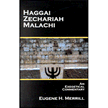 Haggai: In a day of profound and misplaced priorities following the return of the Jews from Babylonian exile, the prophet Haggai sounded a clarion call of rebuke, exhortation, and encouragement to his contemporaries. They had begun to rebuild their own homes and businesses and to establish their statehood as a Jewish community but had been derelict in tending to the construction of the temple and making the Lord the central focus of all their hopes and dreams. The message of Haggai, so effective in shaking the Jews of 520 B.C. from their lethargy, has an abiding relevance for all who fail to seek the Kingdom of God and His righteousness.Zechariah: Whereas Haggai’s vision encompassed, for the most part, his immediate, temporal situation, the range of his contemporary and colleague was much more expansive, for Zechariah not only shared Haggai’s burden about the inertia of the postexilic community, but by vision and dream saw the unfolding of Divine purpose for all of God’s people and for all the ages to come. Rich in apocalyptic imagery and packed with messianic prediction and allusion, Zechariah’s writings became a favorite of the New Testament evangelists and apostles. The glorious hope expounded by the prophet was viewed by them as being fulfilled in the saving work and witness of Jesus Christ. No Minor Prophet excels Zechariah in the clarity and triumph by which he looks to the culmination of God’s programs of redemption.Malachi: The burden of this, the last of the Old Testament prophets, was the glaring in concinnity between the identity of the Jewish community as the people of God and the living out of all that this required of them. Theirs was not the problem of rebuilding the Temple and holy city, for that had long been done by Malachi’s day; rather, it was the issue of holy living and holy service in the aftermath of all the external accomplishment. Malachi, though dead, yet speaks to the modern world about the need to bring performance into line with profession. His message, therefore, is current, especially in light of the coming of the One of whom the prophet so eloquently spoke.
Haggai: In a day of profound and misplaced priorities following the return of the Jews from Babylonian exile, the prophet Haggai sounded a clarion call of rebuke, exhortation, and encouragement to his contemporaries. They had begun to rebuild their own homes and businesses and to establish their statehood as a Jewish community but had been derelict in tending to the construction of the temple and making the Lord the central focus of all their hopes and dreams. The message of Haggai, so effective in shaking the Jews of 520 B.C. from their lethargy, has an abiding relevance for all who fail to seek the Kingdom of God and His righteousness.Zechariah: Whereas Haggai’s vision encompassed, for the most part, his immediate, temporal situation, the range of his contemporary and colleague was much more expansive, for Zechariah not only shared Haggai’s burden about the inertia of the postexilic community, but by vision and dream saw the unfolding of Divine purpose for all of God’s people and for all the ages to come. Rich in apocalyptic imagery and packed with messianic prediction and allusion, Zechariah’s writings became a favorite of the New Testament evangelists and apostles. The glorious hope expounded by the prophet was viewed by them as being fulfilled in the saving work and witness of Jesus Christ. No Minor Prophet excels Zechariah in the clarity and triumph by which he looks to the culmination of God’s programs of redemption.Malachi: The burden of this, the last of the Old Testament prophets, was the glaring in concinnity between the identity of the Jewish community as the people of God and the living out of all that this required of them. Theirs was not the problem of rebuilding the Temple and holy city, for that had long been done by Malachi’s day; rather, it was the issue of holy living and holy service in the aftermath of all the external accomplishment. Malachi, though dead, yet speaks to the modern world about the need to bring performance into line with profession. His message, therefore, is current, especially in light of the coming of the One of whom the prophet so eloquently spoke.![]()
Haggai, Zechariah NIV Application Commentary by Mark J. Boda / Zondervan Corp.
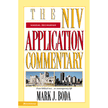 The setting: Jerusalem. Recently returned from Babylonian captivity, the Jews are occupied with personal pursuits while the temple of Yahweh lies in ruins. To the prophets Haggai and Zechariah falls the task of calling God’s people to their forgotten priority: rebuilding his house. Heeding prophetic admonition, the people overcome the obstacles that face them and prosper in their work – thanks largely to the vision and encouragement of the prophets.The books of Haggai and Zechariah represent a golden period in Old Testament history, but they are often overlooked. Yet these two minor prophets speak a major message to the church today. It is one that calls us, as a community of faith, to the priority of God’s house, and inspires us with glimpses of its future glory.Exploring the links between the Bible and our own times, Mark J. Boda shares perspectives on Haggai and Zechariah that reveal their enduring relevance for our twenty-first-century lives.Most Bible commentaries take us on a one-way trip from our world to the world of the Bible. But they leave us there, assuming that we can somehow make the return journey on our own. They focus on the original meaning of the passage but don’t discuss its contemporary application. The information they offer is valuable – but the job is only half done!The NIV Application Commentary Series helps bring both halves of the interpretive task together. This unique, award-winning series shows readers how to bring an ancient message into our present-day context. It explains not only what the Bible meant but also how it speaks powerfully today. [TOP]
The setting: Jerusalem. Recently returned from Babylonian captivity, the Jews are occupied with personal pursuits while the temple of Yahweh lies in ruins. To the prophets Haggai and Zechariah falls the task of calling God’s people to their forgotten priority: rebuilding his house. Heeding prophetic admonition, the people overcome the obstacles that face them and prosper in their work – thanks largely to the vision and encouragement of the prophets.The books of Haggai and Zechariah represent a golden period in Old Testament history, but they are often overlooked. Yet these two minor prophets speak a major message to the church today. It is one that calls us, as a community of faith, to the priority of God’s house, and inspires us with glimpses of its future glory.Exploring the links between the Bible and our own times, Mark J. Boda shares perspectives on Haggai and Zechariah that reveal their enduring relevance for our twenty-first-century lives.Most Bible commentaries take us on a one-way trip from our world to the world of the Bible. But they leave us there, assuming that we can somehow make the return journey on our own. They focus on the original meaning of the passage but don’t discuss its contemporary application. The information they offer is valuable – but the job is only half done!The NIV Application Commentary Series helps bring both halves of the interpretive task together. This unique, award-winning series shows readers how to bring an ancient message into our present-day context. It explains not only what the Bible meant but also how it speaks powerfully today. [TOP]![]() Hosea (see also under “All 12 and combinations,” above)
Hosea (see also under “All 12 and combinations,” above)
Wayward But Loved: A Commentary and Meditations on Hosea by Ray Beeley / Banner Of Truth
Ray Beeley here opens up the meaning of Hosea in a straightforward way, showing that the waywardness of God’s people, in both Old Testament times and New, does not prevent the magnificent display of God’s saving sanctifying love. The men whom God used to give the Scriptures were not prepared for their task in an easy, painless way. Rather, their experiences were ordained by God so that, when they delivered God’s Word, they could do so with deep feeling and conviction. This was never more true that in the case of the prophet Hosea, whose painful experience with his wife Gomer prepared him to understand the ways of God with his people. In explaining the meaning of Hosea’s prophecy, the author makes frequent helpful reference to the writings of earlier commentators on the book.
![]()
Hosea, International Critical Commentary by A. A. Macintosh / Continuum
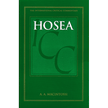 A.A. Macintosh’s masterful work incorporates the latest research from archaeology and the Dead Sea Scrolls to give you an in-depth look at the historical and theological issues of Hosea’s time. New evidence on the meaning of Hosea’s dialectical language enhances the translation and verse-by-verse commentary. A scholarly work.
A.A. Macintosh’s masterful work incorporates the latest research from archaeology and the Dead Sea Scrolls to give you an in-depth look at the historical and theological issues of Hosea’s time. New evidence on the meaning of Hosea’s dialectical language enhances the translation and verse-by-verse commentary. A scholarly work.![]() Joel (see also under “All 12 and combinations,” above)
Joel (see also under “All 12 and combinations,” above)
Joel, Anchor Bible Commentary
By James Crenshaw / Random House, Inc
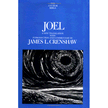 Joel’s prophecy has an unexpectedly familiar ring to it. It was first delivered to people who tolerated almost anything, had difficulty distinguishing right from wrong, and did not want someone telling them how to live their lives. Crenshaw’s fresh Anchor Bible translation and commentary draw on the latest research into Hebrew language and literature to produce down-to-earth insights into Joel’s ancient words and our modern world. 240 pages, hardcover from Doubleday.
Joel’s prophecy has an unexpectedly familiar ring to it. It was first delivered to people who tolerated almost anything, had difficulty distinguishing right from wrong, and did not want someone telling them how to live their lives. Crenshaw’s fresh Anchor Bible translation and commentary draw on the latest research into Hebrew language and literature to produce down-to-earth insights into Joel’s ancient words and our modern world. 240 pages, hardcover from Doubleday.![]() Prophet of the Coming Day of the Lord (Joel),
Prophet of the Coming Day of the Lord (Joel),
Welwyn Commentary Series by O. Palmer Robertson / Evangelical Press
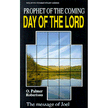 Here the meaning of the prophecy of Joel is presented in an easy to understand style. Joel deals with significant issues that have many parallels to our own time today. It is a reminder for the people of God to heart felt repentance and the glorious truth of the blessing of the Lord in the renewal of the earth by the outpouring of the Spirit on men and women, young and old, Jew and Gentile. O. Palmer Robertson received his Bachelor of Divinity from Westminster Seminary and his Master’s and Doctorate from Union Theological Seminary in Virginia.
Here the meaning of the prophecy of Joel is presented in an easy to understand style. Joel deals with significant issues that have many parallels to our own time today. It is a reminder for the people of God to heart felt repentance and the glorious truth of the blessing of the Lord in the renewal of the earth by the outpouring of the Spirit on men and women, young and old, Jew and Gentile. O. Palmer Robertson received his Bachelor of Divinity from Westminster Seminary and his Master’s and Doctorate from Union Theological Seminary in Virginia.![]() Amos (see under “All 12 and combinations,” above)Obadiah (see under “All 12 and combinations,” above)
Amos (see under “All 12 and combinations,” above)Obadiah (see under “All 12 and combinations,” above)
Jonah (see also under “All 12 and combinations,” above)Jonah: JPS Bible Commentary by Uriel Simon / Jewish Pub Society
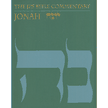 The Jewish Publication Society’s Bible Commentary is a scholarly analysis of the Old Testament. This volume by Uriel Simon exhaustively evaluates the language, plot, historical framework, and importance of Jonah to later tradition. The commentary itself is an in-depth analysis of Jonah with the Hebrew text given alongside its translation. This is a scholarly work suited for the Old Testament scholar. [TOP]
The Jewish Publication Society’s Bible Commentary is a scholarly analysis of the Old Testament. This volume by Uriel Simon exhaustively evaluates the language, plot, historical framework, and importance of Jonah to later tradition. The commentary itself is an in-depth analysis of Jonah with the Hebrew text given alongside its translation. This is a scholarly work suited for the Old Testament scholar. [TOP]![]() Micah (see also under “All 12 and combinations,” above)
Micah (see also under “All 12 and combinations,” above)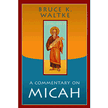 A Commentary on Micah by Bruce K. Waltke / Eerdmans Publishing Co.
A Commentary on Micah by Bruce K. Waltke / Eerdmans Publishing Co.
Old Testament scholar Waltke offers an indispensable resource that bridges the prophet’s ancient world and present-day life. Tackling hard questions about date and authorship and illuminating Micah’s contribution to Christian theology, Waltke interprets the book’s kingdom hope for both biblical Israel and today’s church. Exegetically thorough, historically flawless, and masterfully written. 480 pages, hardcover from Eerdmans.![]()
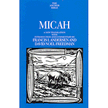 Micah, Anchor Bible Commentary by F.I. Andersen & D.N. Freedman / Random House, Inc
Micah, Anchor Bible Commentary by F.I. Andersen & D.N. Freedman / Random House, Inc
As he delivered God’s message to Israel, Micah spoke of judgment, but also of redemption. Andersen and Freedman offer an unparalleled translation and commentary, showing how the prophet paired poetic complexity with literary sophistication. With exacting analysis, the authors explain why Micah’s audience was compelled to respond—and why his words of conviction and restoration continue to resonate today. 720 pages, hardcover from Doubleday.![]() Micah: Introduction and Commentary by William McKane / Continuum
Micah: Introduction and Commentary by William McKane / Continuum
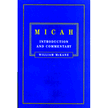 The acclaimed author of both Jeremiah volumes in the International Critical Commentary series offers a new translation and commentary. Professor McKane’s textual and lexicographical analysis contends that the Book of Micah was later reworked for use in the religious community after the destruction of Jerusalem, and to provide hope toward the end of the exile. 256 pages, hardcover from T. & T. Clark.
The acclaimed author of both Jeremiah volumes in the International Critical Commentary series offers a new translation and commentary. Professor McKane’s textual and lexicographical analysis contends that the Book of Micah was later reworked for use in the religious community after the destruction of Jerusalem, and to provide hope toward the end of the exile. 256 pages, hardcover from T. & T. Clark.![]() Nahum (see under “All 12 and combinations,” above)
Nahum (see under “All 12 and combinations,” above)
Habakkuk (see also under “All 12 and combinations,” above)Habakkuk, Anchor Bible Commentary by Francis Andersen / Random House, Inc
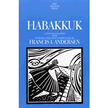
A little-known but influential book, Habakkuk ponders the question of why God allowed Israel to be invaded and punished by the cruel Chaldeans. God responds that they, too, will be punished and that the just should live by faith. Anderson, an expert on minor prophets, carefully weighs each phrase. 456 pages, hardcover. [TOP]![]() Zephaniah (see under “All 12 and combinations,” above)Haggai and Zechariah (see also under “All 12 and combinations,” above)
Zephaniah (see under “All 12 and combinations,” above)Haggai and Zechariah (see also under “All 12 and combinations,” above)
Haggai, Zechariah NIV Application Commentary by Mark J. Boda / Zondervan Corp.
 The setting: Jerusalem. Recently returned from Babylonian captivity, the Jews are occupied with personal pursuits while the temple of Yahweh lies in ruins. To the prophets Haggai and Zechariah falls the task of calling God’s people to their forgotten priority: rebuilding his house. Heeding prophetic admonition, the people overcome the obstacles that face them and prosper in their work – thanks largely to the vision and encouragement of the prophets.The books of Haggai and Zechariah represent a golden period in Old Testament history, but they are often overlooked. Yet these two minor prophets speak a major message to the church today. It is one that calls us, as a community of faith, to the priority of God’s house, and inspires us with glimpses of its future glory.Exploring the links between the Bible and our own times, Mark J. Boda shares perspectives on Haggai and Zechariah that reveal their enduring relevance for our twenty-first-century lives.Most Bible commentaries take us on a one-way trip from our world to the world of the Bible. But they leave us there, assuming that we can somehow make the return journey on our own. They focus on the original meaning of the passage but don’t discuss its contemporary application. The information they offer is valuable – but the job is only half done!The NIV Application Commentary Series helps bring both halves of the interpretive task together. This unique, award-winning series shows readers how to bring an ancient message into our present-day context. It explains not only what the Bible meant but also how it speaks powerfully today.
The setting: Jerusalem. Recently returned from Babylonian captivity, the Jews are occupied with personal pursuits while the temple of Yahweh lies in ruins. To the prophets Haggai and Zechariah falls the task of calling God’s people to their forgotten priority: rebuilding his house. Heeding prophetic admonition, the people overcome the obstacles that face them and prosper in their work – thanks largely to the vision and encouragement of the prophets.The books of Haggai and Zechariah represent a golden period in Old Testament history, but they are often overlooked. Yet these two minor prophets speak a major message to the church today. It is one that calls us, as a community of faith, to the priority of God’s house, and inspires us with glimpses of its future glory.Exploring the links between the Bible and our own times, Mark J. Boda shares perspectives on Haggai and Zechariah that reveal their enduring relevance for our twenty-first-century lives.Most Bible commentaries take us on a one-way trip from our world to the world of the Bible. But they leave us there, assuming that we can somehow make the return journey on our own. They focus on the original meaning of the passage but don’t discuss its contemporary application. The information they offer is valuable – but the job is only half done!The NIV Application Commentary Series helps bring both halves of the interpretive task together. This unique, award-winning series shows readers how to bring an ancient message into our present-day context. It explains not only what the Bible meant but also how it speaks powerfully today.![]() Malachi (see also under “All 12 and combinations,” above)
Malachi (see also under “All 12 and combinations,” above)
Malachi: Anchor Bible Commentary by Andrew Hill / Random House, Inc
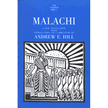 Malachi is frequently overlooked by scholars and laypeople. Yet Malachi’s passionate call to repentance was crucial in preparing Israel for the important reforms of Ezra and Nehemiah. In this new translation and commentary, Hill places the book of Malachi in its historical context, offering an illuminating perspective on Israel’s cultural and religious thought in the fifth century B.C. Includes photographs, line drawings, and maps. 464 pages, hardcover from Doubleday. [TOP]
Malachi is frequently overlooked by scholars and laypeople. Yet Malachi’s passionate call to repentance was crucial in preparing Israel for the important reforms of Ezra and Nehemiah. In this new translation and commentary, Hill places the book of Malachi in its historical context, offering an illuminating perspective on Israel’s cultural and religious thought in the fifth century B.C. Includes photographs, line drawings, and maps. 464 pages, hardcover from Doubleday. [TOP]![]()

